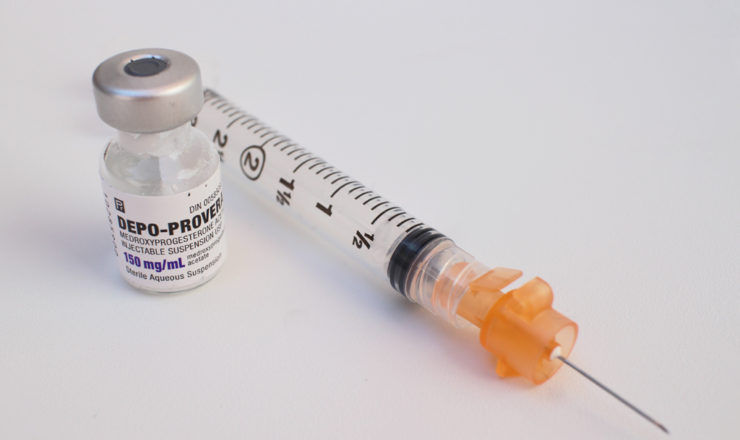Fertility Awareness Methods (FAM)
What is fertility?
- Fertility means the biological ability to produce children.
- People with testicles* are fertile through their ability to produce sperm in the testicles, which is released during ejaculation. They are fertile all day every day once they start to ejaculate semen (cum) containing sperm (at puberty, ages 11-15 years).
- People with ovaries* are fertile through their ability to release mature eggs from the ovaries that can be fertilized be sperm. They are born with every egg they will ever have. They start to release those eggs around their first period (at puberty, ages 9-14 years) and are only fertile (can become pregnant) on certain days of their cycle.
- See the How Pregnancy Happens info page for details [Link].
What happens during the fertility cycle?
- A fertility cycle for a person with ovaries (sometimes called menstrual cycle) is the time from the first day of bleeding (their period) to the day before they start their next period.
- While 28 days is often used to describe a “normal” cycle length, a regular cycle can actually range from 23-35 days. Only 15% of people have a 28-day cycle.
- The cycle begins when a person bleeds/menstruates (shed the lining of their uterus). A period can last 3-7 days.
- After menstruation, levels of the hormone estrogen start to rise and make the uterine lining thicken. At the same time, an egg in one of the ovaries starts to mature.
- Hormones trigger the release of an egg from the ovary into the fallopian tube, a process called ovulation. Hormones continue to thicken the uterine lining to prepare it for a potential pregnancy.
- The egg lives for about 24 hours after it is released. If it is fertilized by sperm, it will travel down the fallopian tube, into the uterus. If it attaches to the uterine wall, it becomes a pregnancy.
- Pregnancy is not possible if there is no egg. However, because sperm can live in your vagina** for up to 5 days, you can be fertile for about 5 days before ovulation and 24 hours after ovulation.
- You ovulate only once per cycle, although you can release 2 eggs in one ovulation.
- If the egg is not fertilized by sperm it will disintegrate, your hormone levels will drop and the lining of the uterus is shed through menstruation, starting the cycle all over again.
- The time between Day 1 and ovulation can vary. The time from ovulation until bleeding begins is about 14 days.
What affects fertility?
- Most people do not know whether or not they are fertile unless they start trying to get pregnant or get pregnant unexpectedly.
- If you have testicles, the amount of sperm (sperm count) or the ability of sperm to move (sperm motility) can be affected by stress, family history, medical conditions, environmental factors and lifestyle factors (e.g. smoking, use of drugs and alcohol, etc.). You produce sperm for your whole life after puberty, though your sperm count declines as you age.
- If you have ovaries, your fertility can be affected by stress, family history, illness, travel, rapid weight gain or loss, lifestyle factors (eg. smoking, use of drugs and alcohol, etc.), breastfeeding and the use of hormonal birth control. Your fertility declines with age and eventually your fertility cycles stop altogether (menopause). This usually happens between 45-60 years of age.
Fertility signs for people with ovaries
- Your body provides different signals when it is fertile.
- Cervical mucus is produced in the cervix (the opening to the uterus) and comes out through the vagina. When you are fertile, the mucus becomes more wet, slippery and stretchy (like egg whites) which helps sperm to swim up into the uterus towards the egg. People who are using hormonal birth control do not ovulate and therefore don’t produce this cervical mucus.
- Basal body temperature: After you ovulate, there is a small increase in your body temperature.
- Cervical position: when you are fertile, your cervix becomes softer, more open and changes angle.
What are Fertility Awareness Methods (FAMs)?
FAMs are different methods that help people track their fertility/menstrual cycle and identify their body’s fertility signs to predict when they are fertile. If you are trying to prevent a pregnancy, all FAMs involve avoiding getting sperm in your vagina or using another form of birth control (e.g. condoms, spermicides, a diaphragm, etc.) during fertile times. Examples of FAMs are:
Justisse Method
The Justisse Method method involves keeping a record (charting) of your changing cervical mucus and your body temperature, measured as soon as you wake up in the morning. For more information, visit www.justisse.ca.
Weschler’s FAM
Weschler’s FAM involves keeping a record of your changing cervical mucus and your waking body temperature. Visit www.tcoyf.com.
Standard Days Method (SDM)
This method involves keeping track of the length of your cycle and assumes the time of greatest fertility is between days 8-19. A ring of coloured beads is sometimes used to help keep track of fertile days. Visit www.contracept.org.
Effectiveness
- Effectiveness rates vary for each type of FAM but can range from 78-98% effective.
- FAMs must be used consistently to be effective.
Advantages of FAMs
- There are no side effects.
- You can use FAMs if you are unable to or do not want to use other birth control methods.
- FAMs can be totally free! If you want to use beads or a special chart to track your cycle, you may need to buy those. Some people also like to see a FAM consultant to help them start the process, which also has financial costs.
- You learn about your body and fertility cycle.
- If you don’t want to use a backup method of birth control during fertile times, you can use those times to explore other kinds of sex, such as oral sex, anal sex, mutual masturbation, etc.
Disadvantages of FAMs
- You often have to do something every day (e.g. mark something down in a chart, check your temperature, etc.).
- You will have to use another method of birth control or avoid getting sperm in your vagina at certain times in your cycle.
- You have to feel comfortable touching your own body (to gather and look at cervical mucus).
- Like many forms of birth control, FAMs do not protect you from sexually transmitted infections (STIs).
- These methods may not work if you don’t have regular cycles.
- It can take time to learn and use FAM effectively.
- FAM consultants can be hard to find and appointments with consultants can be expensive.
FAM resources
- Red Tent Sisters offers online groups and support using the Justisse method. Visit redtentsisters.com classes or call 416-463-8368 or for more information.
For a downloadable resource on this topic, please visit Planned Parenthood Toronto Factsheet Database.
If you have questions about this topic, feel free to contact one of our peer educators. [Link]
* People with testicles are usually designated male at birth while people with ovaries are usually designated female at birth. People with testicles don’t always identify as male and people with ovaries don’t always identify as female.
**We know that these aren’t the words everyone uses for their bodies (eg. trans folks) and support you using the language that feels best for you.
Last Edited: June 2020






